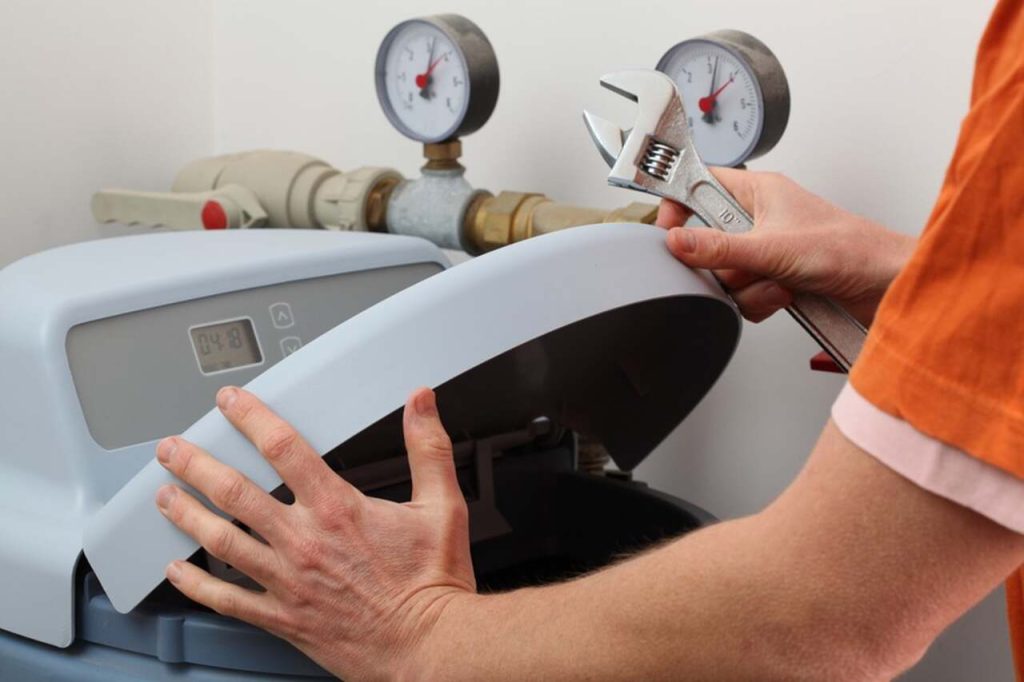As a homeowner, maintaining the quality of your water supply is crucial for your family’s health and comfort. One essential component in achieving this goal is proper care for your water-softening system.
In this comprehensive guide to water softener maintenance, you’ll learn how to prevent common issues like salt bridge formation, maintain optimal performance, and extend the life of your system.
Equipped with these tips and best practices, you can ensure your home continues enjoying softened water’s benefits.
You can also visit the following link to learn about the water softener pros and cons that homeowners should be cautious of before making a purchase.
Essential Water Softener Maintenance
To ensure your water softener system is functioning efficiently, it’s necessary to check and maintain salt levels regularly, clean and sanitize the system, inspect and replace parts if needed, and regenerate the resin bed.
Check And Maintain Salt Levels
Regularly checking and maintaining salt levels is essential to water softener maintenance. Salt is a regenerating agent for the resin beads that help remove hard minerals from your water.
To ensure optimal performance, check your salt levels monthly and refill as needed.
Most systems have a marker to indicate when it’s time to add more salt, but if yours doesn’t have one or you’re unsure, use a flashlight to check inside the brine tank.
Using high-quality salts designed explicitly for water softeners can also make a difference in how efficiently your system runs. Avoid using rock salts or those with high impurities that could affect its longevity and effectiveness.
Clean And Sanitize The System
Cleaning and sanitizing your water-softening system is an essential part of its maintenance. Over time, debris can accumulate in the resin tank, leading to clogs and reduced efficiency.
Next, remove the resin tank or access panel to expose the inside of the system. Carefully clear away any loose debris using a soft brush or cloth.
Once this soaking period is complete, drain the solution before thoroughly rinsing it with clean water. Finally, reassemble everything again before restoring power or reconnecting any valves.
Inspect And Replace Parts
Another essential aspect of water softener maintenance is inspecting and replacing parts as needed. Over time, components such as valves, O-rings, and gaskets wear out from regular use and exposure to minerals in hard water.
To prevent these issues, it’s essential to regularly check for signs of wear and tear on your water softener’s components.
Remember: even a minor issue with one component can cause more significant problems if left unaddressed.
Regenerate The Resin Bed
The resin bed is a crucial component of your water softening system that requires regular maintenance. Over the period of time, the resin beads in the tank will become saturated with hard minerals and lose their ability to soften water effectively.
To ensure successful regeneration, it’s essential to follow manufacturer recommendations for salt type, amount, and replacement frequency. It would help to inspect your resin bed regularly for signs of wear or damage, such as cracks or discoloration.
Conclusion
Maintaining a water softener is crucial for ensuring its optimal performance and longevity. By following our essential maintenance checklist, homeowners can prevent salt bridge formation, maintain proper drainage, improve water quality and softening efficiency, and extend the life of their system.
Regularly checking and maintaining salt levels, cleaning and sanitizing the system, inspecting parts for wear or damage, and regenerating the resin bed are crucial tasks to keep your water conditioner working efficiently.
It’s also vital to troubleshoot common issues quickly and determine whether DIY maintenance or professional services are needed.

